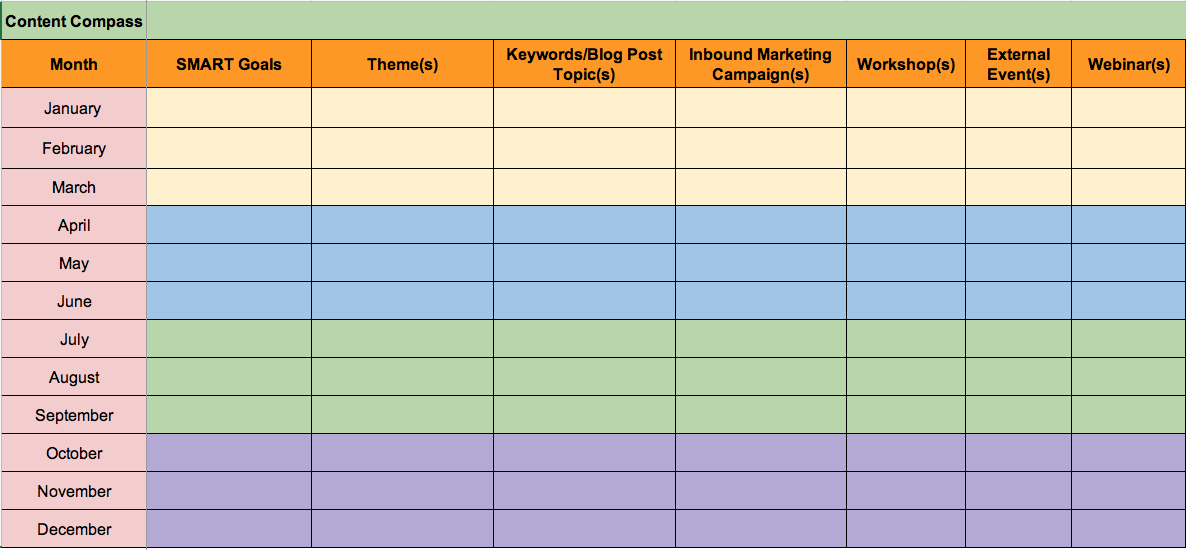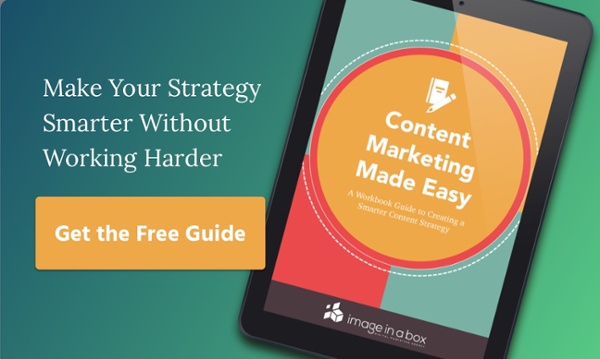Want to know the secret to make content generation easier? The key is to create content that continues to grow on its own. Initially, this may sound unrealistic, but it’s actually a simple process. We are going to cover the steps it takes to generate valuable content that you can continue to reuse in your overall marketing strategy.
Step 1: Find your anchor content
 Every organization has a content-type that’s a perfect match for its marketing goals and target audience. Those content anchors could be newsletters, eBooks, webinars, and other pieces of content that help your organization’s target persona.
Every organization has a content-type that’s a perfect match for its marketing goals and target audience. Those content anchors could be newsletters, eBooks, webinars, and other pieces of content that help your organization’s target persona.
Think of your anchor content as the trunk of a tree. A good piece of anchor content is usually lengthy, so it’s extensive enough to convey effective information and carry its own weight. It should also be consistent enough in quantity and topic selection that you can then identify sections of your anchor content to use as your “branches” through shorter blog posts, social media updates, and other “quick bite” reads.
While shorter branch content can be both micro-targeted and written for generalized audiences, anchor content should always be tailored specifically to your primary buyer personas, ensuring your “hooks” find receptive targets.

Step 2: Build out your anchor content through your shorter content
Blog post content is where most of your search engine traffic will come from, so search engine optimization (SEO) is vital to guarantee you’re getting the most ROI out of your efforts. Your blog, email, and social content is the best way to engage in ongoing, buzz-worthy conversations with your audience, demonstrate that you’re keeping up with current events in your field, and provide more opportunities to establish your viewpoint and messaging angles.
Once you’ve identified a solid content anchor, you can outline your anchor content and use that outline as a planning guide for your short-form content. This makes building out your content plan for blogs, emails, and social media a breeze. These types of content are pivotal to your marketing strategy since they’re often the first exposure a new audience has to your brand and messaging.
To stay organized, we recommend using a content compass, like the one below, to outline your content plan. It also helps you keep track of SMART goals, themes, events, etc.

The best content strategy builds the trunk from the branch content, to produce valuable offers for its audience with minimal extra effort. And best of all, since all of the content will be in sync, all of the shorter form content will lead readers to engage with your anchor content through offers and CTAs. Ideally, converting any reader to a lead.
Step 3: Build content equity, then cash it in
The best part about an expanded content catalog is that it quickly becomes your most valuable asset. A good content-driven marketing strategy will yield plenty of reusable pieces that can be repurposed and reposted as required.
This is especially true for your anchor and blog post content since you can pull sub-sections or key points to repurpose into videos, podcasts, infographics and even buzzworthy social media or email marketing campaigns.
Think of this as cashing in on the equity you’ve built up—once you’ve created great content the hard part is over! You simply need to focus on getting the most value out of that content and finding ways to revamp it for different audience segments.
Step 4: Send high-performers on a star tour
A successful marketing strategy always relies on data and metrics, so you should never be in doubt about which pieces of content are pulling the most weight. To maximize your ROI, you need to perform thorough content audits to evaluate the success of given content types and identify your highest ROI pieces.
The very best performers in your content catalog are your all-stars with a proven ability to capture your audience’s attention, and they should be used accordingly. Send those stars on a tour by re-publishing them in high-traffic venues. You can start with your own accounts on sites like LinkedIn, Medium or SlideShare.
The content tree, fully grown
Though the specifics will vary for each organization, this four-step process is a great way to organize your thoughts about your content catalog and can be used to guide your planning and strategy meetings.
Once you’ve expanded your content catalog and established a solid anchor and branch selection, your task will get easier as that content continues to build and maintain its own momentum. Though the effort may seem daunting at first, the dividends will ensure you reap the benefits for years to come!
Do you want to get started on planning out your organization's strategy to generate more valuable content?
Check out our free workbook guide, Content Marketing Made Easy, that will keep your ideas in one place alongside time-saving tips for each step of the process. Click below to learn more and get our free guide!


